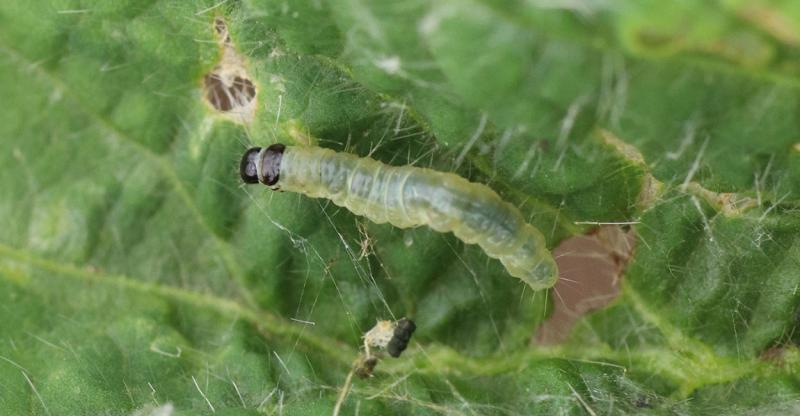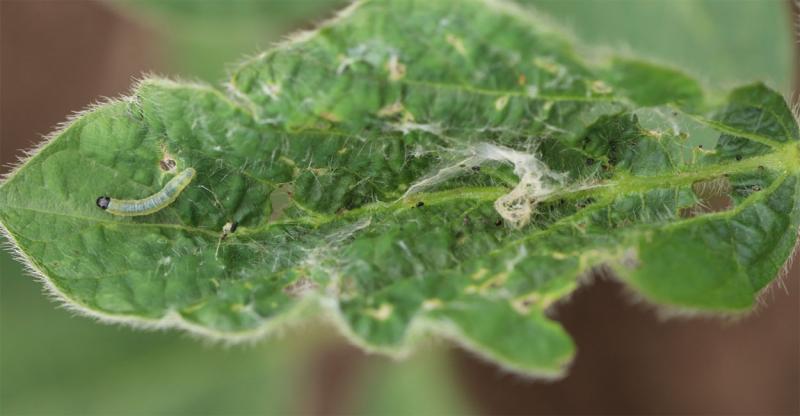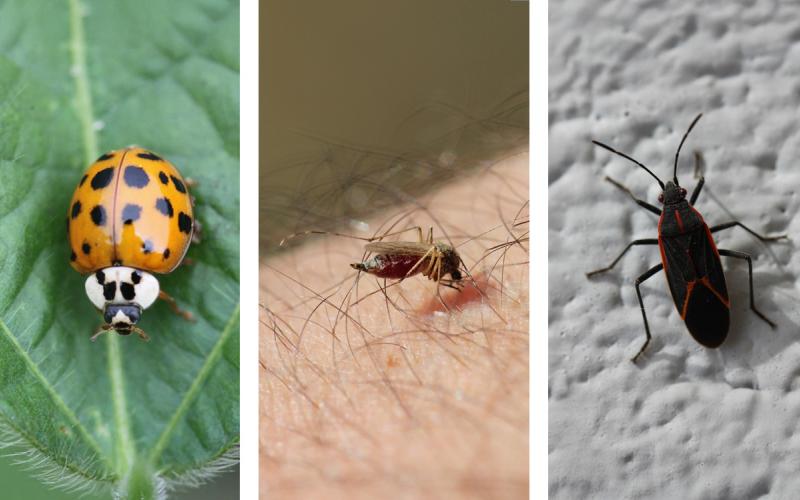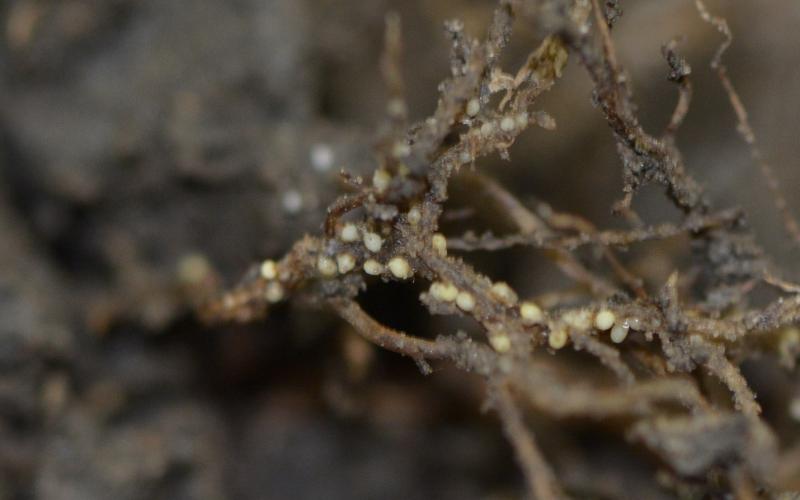
Originally Submitted: July 8, 2021
If you’ve observed rolled soybean leaves that are held together by webbing, don’t immediately think thistle caterpillar. The obliquebanded leafroller caterpillar will roll soybean leaves and hold the leaf in place with silken webbing. The caterpillars then feed on the leaf that is rolled. They are most commonly found in the upper soybean canopy. These caterpillars are relatively small and have a light to dark-green colored body. In addition, they have a dark-brown to almost-black head capsule with a dark brown to black segment directly behind the head, black true legs and four pairs of abdominal prolegs (Figure 1).

The oblique banded leafrollers feed on a wide variety of hosts, which include soybean. Typically, these caterpillars are more associated with plants in the Rosaceae family (e.g., apple, peach and pear). In all of our observations, there is only a single caterpillar per plant, and the defoliation associated with these caterpillars appears to be limited to one or two leaves per plant. The older caterpillars use a silken webbing to roll the leaves that they are feeding on (Figure 2). Although these caterpillars alone are not cause for concern, cumulative defoliation should be monitored this time of year with a threshold of 20% defoliation throughout the field.


